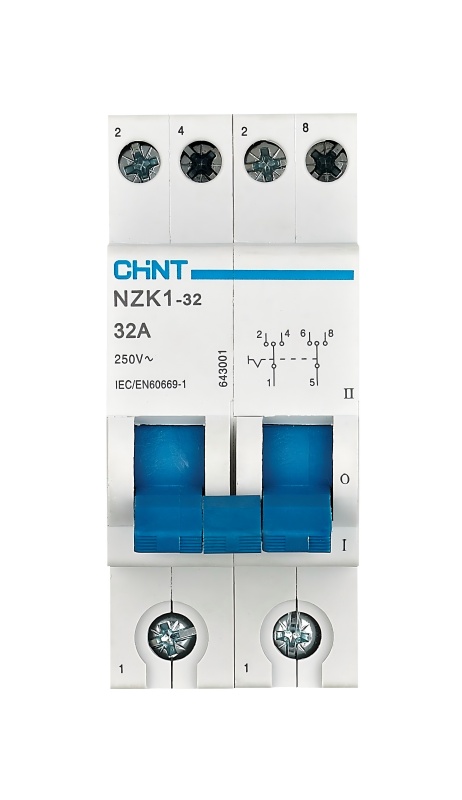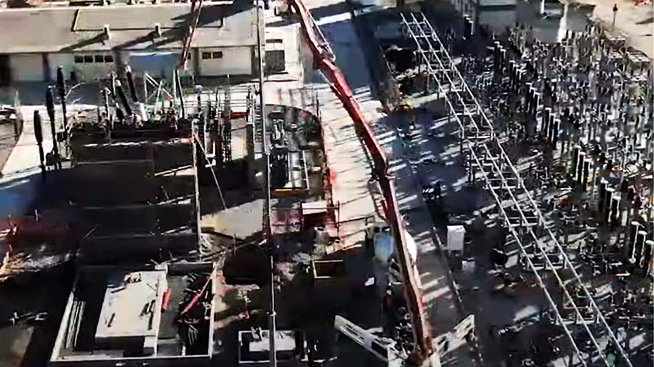Homes or small establishments need a “change over switch” to safely shift power source from the main electricity to a generator. This device prevents the simultaneous use of both power sources and keeps people and equipment safe during power outages.
Here, we discuss the importance of a changeover switch for generator and safe procedures to install it on your property.
What Is a Change Over Switch?
A change over switch is an electrical device that can switch the load from one power source (main grid) to an alternative (backup generator).
Say a power outage happens. If your property has a generator installed, it needs a changeover switch that can immediately shift the property’s electrical source to the generator. This switch also ensures that only the generator feeds power to the circuit to prevent safety hazards or equipment damage.
A change over switch also prevents backfeeding, which occurs when generator power flows into utility power lines. When there is backfeeding, utility workers are at risk of electric shock because they expect utility lines to be de-energized. A backfeeding generator may also attempt to power the utility grid and other connected properties, which can cause short circuits or overheating because it cannot handle excessive load.
We can classify change over switches into two types:
- Manual: Requires an operator to physically operate them. When the main power fails, someone must flip the switch to move the electrical supply from the grid to the generator. After the grid power returns, the user must manually switch it back. Manual switches are used in homes or small businesses where quick and easy switch access is possible.

CHINT’s NZK1-32 is an example of a compact, reliable manual change over switch for single-phase residential installations. This device is KEMA-certified with an electrical rating of AC 50/60Hz, rated voltage of up to 250V, and rated current of 32A.
- Automatic: Can detect power outages and promptly switch the power source to the generator, even without an operator’s intervention. When utility power is restored, the switch automatically returns to the main source. Ideal for facilities where constant power is vital, such as hospitals, laboratories, and data centers.
Safety Precautions Before Installation
Observe the following precautions prior to change over switch installation to avoid an electric shock.
- Turn off the main power supply via the breaker box.
- Put on rubber-soled shoes and use protective gloves. These will serve as safeguards in case of stray voltage.
- Before touching any wire, use a voltage tester to confirm that all wires are de-energized.
- Review the instructions provided with the change over switch. Specific requirements may apply to some models for safe and easy installation. For example, a manual can include important details about wiring diagrams, mounting instructions, and safety warnings that are model-specific.
- Consult a professional electrician if you are unsure of your ability to install the change over switch.
Tools and Materials Needed
Here are the materials you need to install a change over switch.
- Change over switch: This can be manual or automatic.
- Screwdriver Set: Lets you loosen or tighten screws on covers, terminals, and mounting brackets.
- Voltage Tester: Determines if wires are live before you touch them.
- Circuit breaker (optional): This protects your system from overloads or short circuits. Some installations require a new breaker to manage the change over switch safely.
- Wiring (correct gauge): Connect the change over switch to your power sources and loads. Make sure to use wires of the right thickness (gauge) for your specific electrical load to avoid overheating.
- Cable ties: Bundle wires inside an electric panel.
- Wiring Diagram/Manual: Gives precise instructions to connect the switch to other components.
- Safety gloves and eyewear: This includes insulated gloves and protective eyewear to shield your hands and eyes from electrical shocks, sparks, or debris
Change Over Switch Wiring Diagram
Consider a single-phase setup, which is commonly used in homes and small businesses. Here, the electricity flows through two wires: one "live" (or "phase") wire and one "neutral" wire.
In this setup, the change over switch acts like a “gatekeeper” that decides whether your home sources its power from the utility grid or from a generator.
Now, here is how the wiring usually works.
A set of terminals on the change over switch is connected to the main power line. This is known as the switch’s “Mains” or “Utility”. Then, another set of terminals in the switch is connected to your generator’s output wires, which is often identified as the “Generator”.
There is also another terminal set in the switch called “Load”. Wires from here travel to your home’s main distribution panel, which feeds electricity to your lights, outlets, and appliances.
For a hassle-free installation, it is important that the switch comes with clearly marked terminals. CHINT’s NZK1-32 specifies all relevant terminals for safe and easy installation in compact enclosures of this manual change over switch for generator.
How to Install a Manual Change Over Switch (Step-by-Step)?
- Step 1: Turn off the property’s main power via your home’s main breaker in the electrical panel. All power must be deactivated before you work.
- Step 2: Choose a spot close to your main panel where you can mount the change over switch. Use screws to fix the switch box to the wall.
- Step 3: Find the “utility lines” or the wires provided by the power company. Then, connect these to the terminals marked “Utility” on the switch. Make sure to tighten the screws so wires stay in place.
- Step 4: Run the wires from the generator and attach them to the terminals marked “Generator” in the switch. Make sure to measure the wires beforehand to ensure that they are sufficiently long to reach from the generator to the switch. Moreover, it is recommended to use a conduit or cable protector to keep the wires safe from damage and the weather. You may strip about half an inch of insulation from each wire end.
- Step 5: Link the output terminals of the switch to your home’s main distribution panel.
- Step 6: Inspect each wire to make sure nothing is loose. Then, test if the switch is functioning well.
Discover a Top-Class Change Over Switch From CHINT
Every property that relies on a generator as backup power requires a reliable change over switch for an uninterrupted power supply. This device smoothly transitions the facility’s power source from the power grid to the alternative generator.
For a leading-edge change over switch product, visit CHINT. We are a world-class provider of electrical devices made for seamless storage, distribution, and transmission of energy in commercial, residential, and industrial facilities. We ensure that our clients will have access to innovative energy solutions to achieve long-term sustainability. Visit CHINT today.
If you have any questions or need further assistance, don't hesitate to reach out to us.










